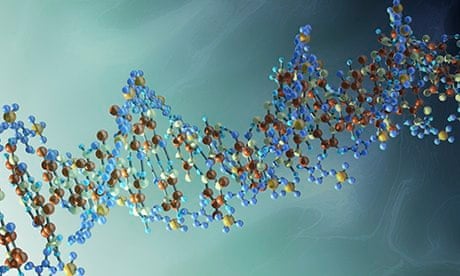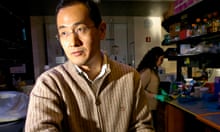Scientists have prevented muscle wastage in mice with a form of muscular dystrophy by editing the faulty gene that causes the disease.
The radical procedure could not be performed in humans, but researchers believe the work raises hopes for future gene-editing therapies to stop the disease from progressing in people.
Duchenne muscular dystrophy is caused by mutations in a gene on the X chromosome and affects around one in 3,500 boys. Because girls have two X chromosomes they tend not to be affected, but can be carriers of the disease.
The pivotal gene is used to make a protein called dystrophin which is crucial for muscle fibre strength. Without the protein, muscles in the body, including the heart and skeletal muscles, weaken and waste away. Most patients die by the age of 25 from breathing or heart problems.
Researchers in the US used a powerful new gene-editing procedure called CRISPR to correct mutations in the dystrophin gene in mice that were destined to develop the disease. They extracted mouse embryos from their mothers and injected them with the CRISPR biological machinery, which found and corrected the faulty gene. After the injections, the mouse embryos were reimplanted in females and carried to term.
Tests on the mice found that the therapy helped to restore levels of dystrophin, and that their skeletal muscle performed normally, even when only 17% of their cells contained corrected genes.
The procedure could not be done in humans, but the proof-of-principle experiment demonstrates that correcting only a small proportion of cells could lead to a dramatic improvement for patients.
The researchers, led by Eric Olson at the University of Texas Southwestern Medical Centre, said that instead of correcting faulty genes in human embryos, future procedures might achieve the same effects by correcting genes in muscle cells soon after birth. That challenge is considerable though, because the gene-editing must be done in far more cells that are harder to get to.
"The approach we describe could ultimately offer therapeutic benefit to Duchenne muscular dystrophy and other human genetic diseases in the future," the authors write in the journal Science.
Marita Pohlschmidt, director of research at the Muscular Dystrophy Campaign, said: "We welcome the encouraging results described in this paper because they show that in principle it might be possible to repair genetic defects. Successfully repairing a genetic defect to restore production of a functional protein has the potential to be a long-lasting treatment or even a cure."
But she warned that the research was at an early stage. "To develop this technique into an effective treatment for people with muscle-wasting conditions it may be necessary to combine it with other therapeutic approaches such as stem cell therapy," she said.





Comments (…)
Sign in or create your Guardian account to join the discussion